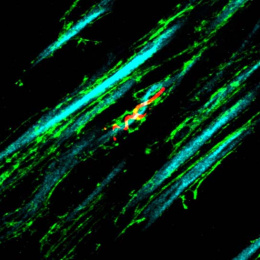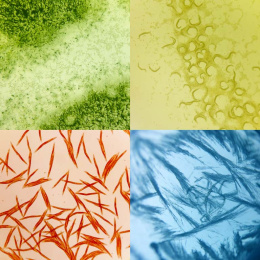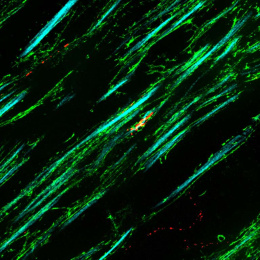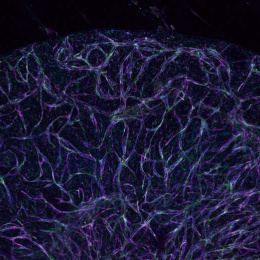Morphological and Proliferative Changes in the Brain
Morphological and Proliferative Changes in the Brain
Fatema Abdurrob
Picower Institute for Learning and Memory, MIT Department of Brain and Cognitive Sciences
Alzheimer’s disease (AD) model mice are stimulated with non-invasive 40-Hz auditory flicker (Gamma ENtrainment Using Sensory stimulus, or GENUS), which has been shown to reduce extracellular aggregates of amyloid beta peptides, a hallmark of AD pathology, and elicit a glial response. Here, blood vessels (green) and reactive astrocytes (magenta), cells crucial for synaptic function and maintaining blood brain barrier, are shown in the hippocampus (blue: DAPI, neuronal cell body layer in CA1 region of hippocampus) after GENUS.






